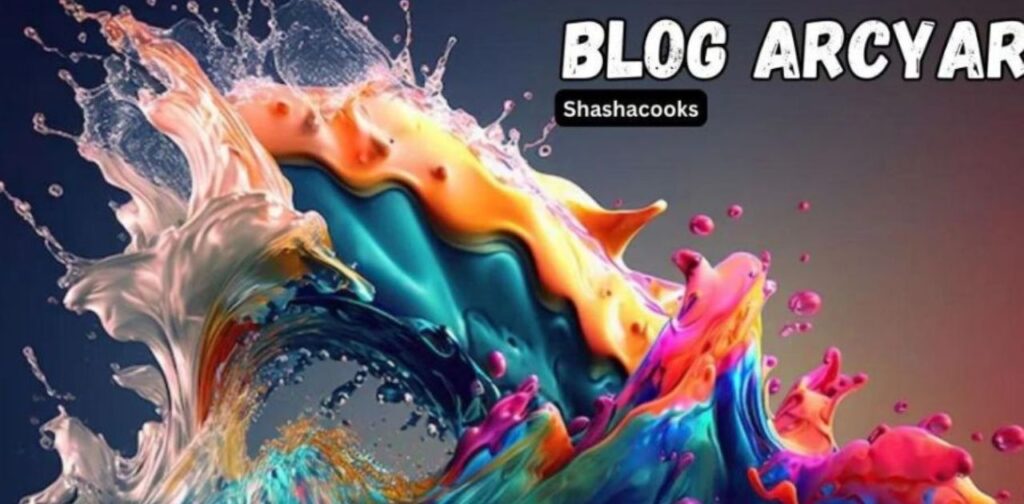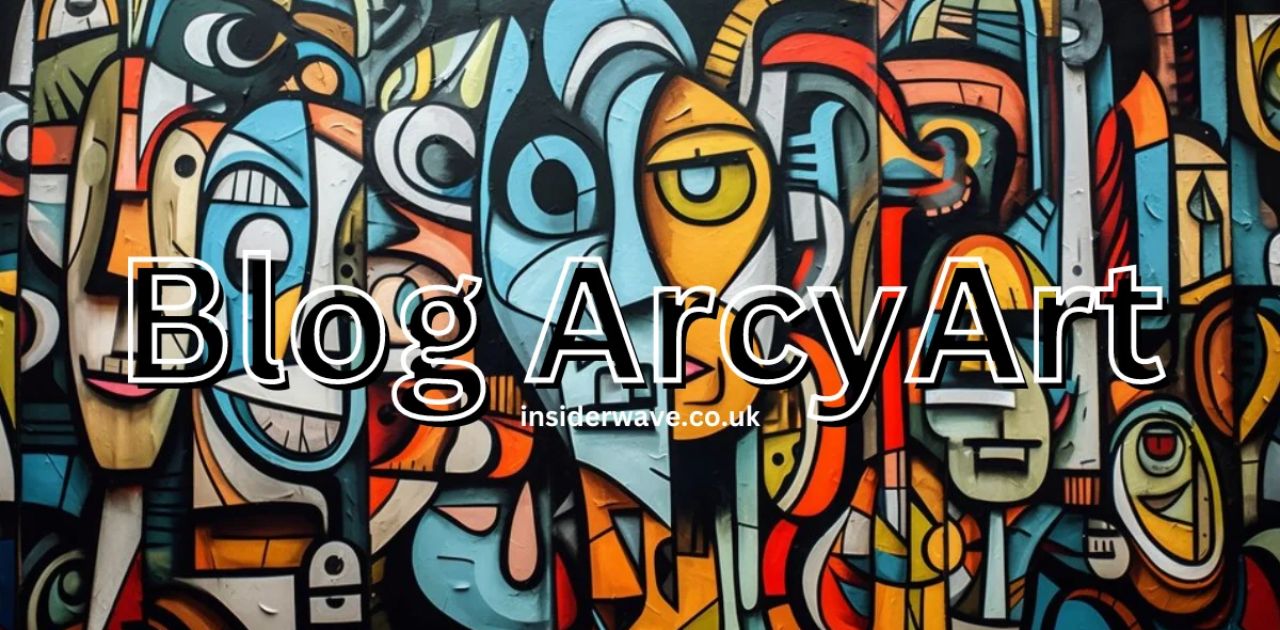Modern art movements have revolutionized the way we perceive and create visual expression. From the late 19th century to the present day, these movements have challenged traditional norms, embraced innovation, and offered fresh interpretations of the world around us.
In this comprehensive exploration, we’ll take a journey through the most influential modern art movements, examining their characteristics, key artists, and lasting impact on contemporary art.
Along the way, we’ll see how ArcyArt, a cutting-edge platform for art enthusiasts, artists, and collectors, showcases these movements and fosters a deeper appreciation for modern and contemporary art.
The Birth of Modern Art: Breaking Free from Tradition
Modern art emerged as a response to the rapid societal changes of the late 19th and early 20th centuries. Artists began to shift away from realistic representations, instead focusing on emotional expression and experimentation with form and color.
The Shift from Realism to Expression
The transition from realism to more abstract forms of expression marked a pivotal moment in art history. Artists sought to capture not just the physical appearance of their subjects, but also their emotional essence and the artist’s subjective interpretation.
Key aspects of this shift include:
- Emphasis on the artist’s personal vision
- Exploration of color and form beyond realistic representation
- Incorporation of non-Western artistic influences
How Modern Artists Challenged Artistic Conventions
Modern artists broke free from the constraints of academic art, rejecting traditional techniques and subject matter. This rebellious spirit led to the development of new styles and approaches that would define modern art movements.
“Art is not what you see, but what you make others see.” – Edgar Degas
ArcyArt’s Role in Showcasing Groundbreaking Modern Art
ArcyArt serves as a digital gallery and educational platform, offering art enthusiasts a unique opportunity to explore and engage with modern art movements. Through curated collections, articles, and interactive features, ArcyArt brings the world of modern art to life for a global audience.
Impressionism: Capturing Light and Moment
Impressionism, often considered the first modern art movement, emerged in France in the late 19th century.
Artists like Claude Monet, Edgar Degas, and Pierre-Auguste Renoir sought to capture fleeting moments and the effects of light, often painting outdoors (en plein air).
Characteristics that Define Impressionist Works
Impressionist paintings are known for their distinctive style and approach to capturing the visual world.
Key characteristics of Impressionism include:
- Loose, visible brushstrokes
- Emphasis on light and its changing qualities
- Use of pure, unmixed colors
- Focus on everyday scenes and landscapes
- Capture of fleeting moments and atmospheric effects
Rejecting Academic Techniques: A Bold New Approach
Impressionist artists rejected the formal rules of academic painting, opting for a more spontaneous and informal style. This departure from tradition was met with criticism at first but eventually gained recognition and popularity.
Explore Impressionism through ArcyArt’s Curated Collections
ArcyArt offers a rich selection of Impressionist-inspired works, allowing users to experience the movement’s enduring influence on contemporary artists.
Through virtual exhibitions and in-depth articles, ArcyArt provides context and insight into the Impressionist movement and its legacy.
Cubism: Shattering Perspective

Cubism, pioneered by Pablo Picasso and Georges Braque in the early 20th century, represents one of the most radical departures from traditional representation in the history of art. This movement broke down objects into geometric shapes, presenting multiple viewpoints simultaneously.
The Fragmentation of Form: A New Way of Seeing
Cubist artists sought to depict three-dimensional objects on a two-dimensional canvas by showing them from multiple angles at once. This revolutionary approach to perspective challenged viewers to see the world in a new way.
Cubist techniques include:
- Fragmentation of forms
- Simultaneous presentation of multiple viewpoints
- Use of geometric shapes and planes
- Flattening of pictorial space
- Incorporation of text and collage elements
Analytical vs. Synthetic Cubism: What’s the Difference?
Cubism evolved through two main phases:
- Analytical Cubism (1908-1912):
- Focused on breaking down objects into geometric forms
- Limited color palette, often monochromatic
- More abstract and difficult to decipher
- Synthetic Cubism (1912-1914):
- Incorporated collage and found objects
- Brighter colors and simpler shapes
- More decorative and playful in nature
Discover Cubist-Inspired Works in ArcyArt’s Digital Galleries
ArcyArt’s collection features contemporary artists who draw inspiration from Cubism, showcasing how this groundbreaking movement continues to influence modern art. Through interactive galleries and artist profiles, users can explore the ongoing legacy of Cubism in today’s art world.
Surrealism: Diving into the Subconscious
Surrealism, which emerged in the 1920s, sought to tap into the subconscious mind and explore the world of dreams and irrational thoughts. Inspired by Sigmund Freud’s psychoanalytic theories, Surrealist artists like Salvador Dalí, René Magritte, and Max Ernst created dreamlike imagery that challenged reality.
Exploring the Unconscious Mind through Art
Surrealist artists believed that the unconscious mind was the source of true creativity. They developed various techniques to bypass rational thought and access the deeper recesses of the psyche.
Signature Surrealist Techniques and Recurring Themes
Surrealist artists employed several unique techniques:
- Automatism: Creating art without conscious control
- Juxtaposition: Combining unrelated objects in unexpected ways
- Metamorphosis: Depicting objects transforming into other forms
- Trompe l’oeil: Creating optical illusions that trick the eye
Common themes in Surrealist art include:
- Dreams and the subconscious
- Sexuality and desire
- The absurd and irrational
- Time and memory
- The human body in distorted forms
How Surrealism Influences Today’s Artists on ArcyArt
ArcyArt showcases contemporary artists who continue to explore Surrealist themes and techniques. Through virtual exhibitions and artist interviews, users can discover how Surrealism’s legacy lives on in modern art, inspiring new generations of creators to delve into the realm of the subconscious.
Abstract Expressionism: Emotion on Canvas

Abstract Expressionism, which gained prominence in post-World War II America, is characterized by spontaneous, gestural brushstrokes and an emphasis on conveying emotion rather than depicting recognizable objects.
Artists like Jackson Pollock, Mark Rothko, and Willem de Kooning became iconic figures in this movement.
The Power of Gestural Painting and Action
Abstract Expressionists believed in the act of painting as an expressive method, often using paint in dynamic, energetic ways that conveyed raw emotion.
Key aspects of Abstract Expressionist painting include:
- Large-scale canvases
- Spontaneous, gestural brushwork
- Emphasis on the physical act of painting
- Non-representational imagery
- Exploration of color and texture
Color Field Painting: Immersion in Hue
A subset of Abstract Expressionism, Color Field painting involves large areas of color applied to the canvas to evoke a meditative, emotional response. Artists like Mark Rothko and Barnett Newman were pioneers of this style.
Characteristics of Color Field painting:
- Large, flat areas of color
- Minimal use of gesture or brushstroke
- Focus on the emotional impact of color
- Often large-scale, immersive works
ArcyArt’s Showcase of Contemporary Abstract Expressionists
ArcyArt features a diverse range of contemporary artists who draw inspiration from Abstract Expressionism. Through curated galleries and in-depth artist profiles, users can explore how modern creators continue to push the boundaries of emotional expression through abstract art.
Pop Art: Elevating the Everyday
Pop Art emerged in the 1950s and 1960s as a reaction to the consumer culture and mass media of the post-war era. Artists like Andy Warhol and Roy Lichtenstein used imagery from advertising, comic books, and everyday objects to challenge traditional notions of fine art.
Where Art Meets Consumerism: A Cultural Commentary
Pop Art blurred the lines between high and low culture, using commercial images to critique the growing consumer society of the time.
Key themes in Pop Art:
- Consumerism and mass production
- Celebrity culture and media
- Irony and satire
- Appropriation of popular imagery
Iconic Pop Art Works that Defined an Era
| Artist | Iconic Work | Description |
| Andy Warhol | Campbell’s Soup Cans | Series of 32 paintings depicting Campbell’s soup cans |
| Roy Lichtenstein | Whaam! | Large-scale comic book-style painting of a fighter plane |
| Claes Oldenburg | Giant BLT | Soft sculpture of an oversized sandwich |
| Robert Rauschenberg | Retroactive I | Silkscreen painting combining images of JFK and pop culture |
How Pop Art’s Legacy Lives on Through ArcyArt
ArcyArt showcases contemporary artists who continue to engage with themes of consumerism, technology, and popular culture. Through virtual exhibitions and artist interviews, users can explore how Pop Art’s influence shapes modern artistic expression.
Minimalism: The Art of Less
Minimalism, which emerged in the late 1950s and 1960s, focused on simplicity and the use of essential elements like color, shape, and form.
Artists like Donald Judd, Frank Stella, and Agnes Martin stripped down their art to the basics, aiming for clarity and precision.
Embracing Simplicity and Precision in Art
Minimalist art is characterized by clean lines, geometric shapes, and the use of minimal elements. The emphasis is on the artwork itself as a physical presence, rather than as a representation of something else.
Key principles of Minimalism:
- Simplicity and clarity
- Use of geometric forms
- Emphasis on materials and space
- Rejection of emotional or symbolic content
- Focus on the viewer’s perception and experience
Industrial Materials in Minimalist Creations
Many Minimalist artists used industrial materials such as steel, glass, and concrete, focusing on the materiality of their art to avoid the need for complex narratives or symbolism.
Explore Minimalist Trends on ArcyArt’s Platform
ArcyArt offers a curated selection of contemporary Minimalist-inspired works, allowing users to explore how modern artists continue to find inspiration in the movement’s principles of simplicity and precision.
Contemporary Art: Where Movements Converge
As we move into the 21st century, the boundaries between various art movements have become increasingly fluid, leading to the rise of contemporary art.
Contemporary art often reflects the complexities of globalization, identity, and technology, drawing inspiration from multiple movements and styles.
Blurring the Lines Between Artistic Disciplines
In contemporary art, distinctions between painting, sculpture, and digital media are often blurred. Artists use a wide range of materials and techniques to create works that challenge traditional categorizations.
Identity and Social Justice: Themes Driving Modern Creators
Many contemporary artists use their work to explore issues of personal and collective identity, addressing social justice topics such as race, gender, and environmental concerns.
How ArcyArt Engages with Cutting-Edge Contemporary Art
ArcyArt is at the forefront of showcasing contemporary artists and their diverse expressions. The platform highlights the innovative and interdisciplinary nature of contemporary art, allowing visitors to engage with current trends and discussions in the global art scene.
ArcyArt: Shaping the Future of Artistic Expression
As modern art movements continue to evolve, ArcyArt is committed to supporting the future of art. The platform enables emerging artists to showcase their work, provides insights into new art movements, and fosters a community of art enthusiasts, collectors, and creators.
Embracing New Media and Technology in Art
With the rise of digital art, NFTs, and immersive technologies, the art world is rapidly evolving. ArcyArt stays ahead of these changes, supporting artists and audiences in engaging with cutting-edge technology while maintaining a connection to the core principles of artistic expression.
Supporting Emerging Artists and Fresh Perspectives
One of ArcyArt’s missions is to discover and promote emerging artists who push the boundaries of creative expression. By offering a platform for new voices, ArcyArt ensures that the future of art remains innovative and diverse.
Building Global Connections in the Art World
ArcyArt connects artists and art enthusiasts across the world, creating an inclusive and dynamic community where cross-cultural exchange and creative collaboration thrive. This global approach allows for a rich exchange of ideas and influences, shaping the future of contemporary art.
FAQ’s
What modern art movements can I explore on ArcyArt?
ArcyArt offers a wide range of modern art movements, including Impressionism, Cubism, Surrealism, Abstract Expressionism, Pop Art, Minimalism, and contemporary art styles.
How does ArcyArt help artists engage with modern movements?
ArcyArt provides resources, articles, and insights that help artists understand and participate in contemporary art trends. The platform also offers exhibition opportunities and connects artists with collectors and enthusiasts.
Can I submit my own work to ArcyArt for review?
Yes, ArcyArt accepts submissions from artists looking to showcase their work and gain exposure within the modern art community. Visit the ArcyArt website for submission guidelines and details.
Conclusion
Modern art movements, from Impressionism to Contemporary Art, have left an indelible mark on the art world. These movements have not only transformed creative expression but have also reflected the cultural, social, and political changes of their times.
ArcyArt’s commitment to exploring and showcasing these movements provides an invaluable resource for understanding the evolution of art.
By diving into the complexities of each movement, ArcyArt fosters a deeper appreciation for the diverse and ever-changing nature of art.
Whether you’re an artist, collector, or simply an art enthusiast, the platform offers a wealth of information and inspiration, ensuring that the legacy of modern art continues to influence future generations of artists and thinkers.



